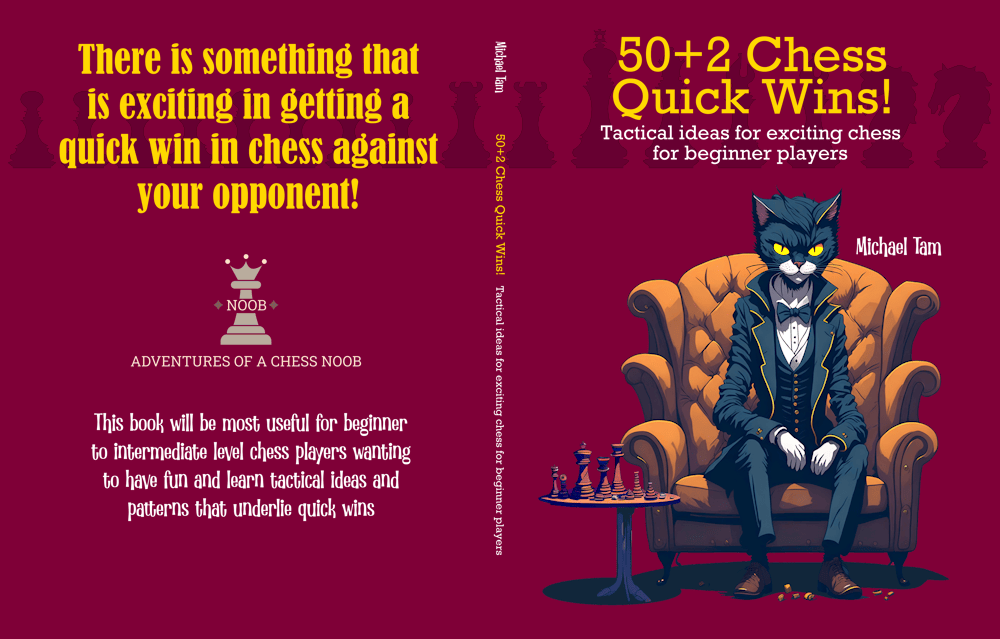
Vienna Game | TACTICAL IDEAS against the Max Lange Defense!
#vienna #maxlange #chesstactics
The Max Lange Defense is one of the most solid ways that Black can respond to the Vienna Game (1. e4 e5 2. Nc3 Nc6). In essence, Black plays defensively, and potentially draws the game into Four Knights Italian-ish lines. Often, these are closed and positional games.
Historically as I was learning the Vienna Game, this was my least favourite variation of the Vienna to play. However, it is important to have a sense of what to do, and not to avoid learning. As noted, it is one of the most solid responses by Black and many people will have an intuition to gravitate towards it as it seems to move the Vienna away from feeling... like the Vienna!
In this game, I show a few tactical ideas that I use. I don't think these are necessarily the best ideas, and certainly, Stockfish doesn't like these moves. However, they create potential imbalances on what could be very symmetrical games, and these inaccuracies can create tactical opportunities that can strike moves later!
Idea 1:
On move 5, Stockfish will rate Nf3, which transposes into a Four Knights Italian line as the best move. However, I usually play Be3 in this position, immediately asking Black to trade bishops. Trading bishops is the best move for Black, but this allows us to capture with the f-pawn. Although we get doubled e-pawns, we'll have a semi-open f-file which can be a powerful tactical resource, especially if Black castles kingside (which they are likely to). If Black refuses to trade bishops, their bishop influence is blocked as the bishops stare down the diagonal. Eventually on move 13 (13... Bxe3), Black cracked and captured my bishop - giving me the f-file and having lost tempo moving their bishop multiple times.
Idea 2:
On move 6, I advanced my knight with Nd5. This is another aggressive move that is suboptimal. However, if Black trades their knight on f6, this removes a defender on Black's kingside, and potentially, their kingside defences might be relatively weak against a big attack. If they avoid trading away the knight, then my knight on d5 is in a commanding position in the centre of the board and is always ready to capture the pawn on c7, or take the c7 square which comes with check. This also potentially constrains the movement of the queen, as it is the only guard of c7 at this point.
Idea 3:
On move 15, I move my queen to e1. This is a common idea in positions where the goal is the attack Black's king on the kingside. Specifically, it gives the queen access to the g3 and h4 squares, potentially lining up for an attack. In this position, it gave my knight the cover it needed to advance forward (17. Nh4), as the square is attacked by Black's queen. On move 20, the queen slips along the dark squares to (Qc3) the long dark square diagonal, which had been weakened and opened by White pushing their kingside pawns forward.
Idea 4:
On move 19, I ignored the seeming upcoming threat of a knight fork of my rook on a1 and my queen. The logic here is that it is often okay to sacrifice the rook on the opposite corner to the action. In essence, that rook's presence was largely unfelt in the immediate and short term - it hadn't moved, it isn't defending anything critical, it isn't threatening any of Black's pieces. However, the sacrifice took one of Black's most active pieces to the wrong side of the board - effectively gaining a tempo advantage with a massive attack as the compensation.
And pretty much, from move 21 after Black captured my rook on a1, effectively deleting their own knight from play, the board explodes! I had a [+M3] available, but I didn't see it in the game. However, my pieces are coordinated so that each move comes with an impending checkmate threat, allowing me to consecutively ignore seemingly hanging positions. I was hoping for a mating net, but Black's king ended up escaping. However, by move 32, we had simplified to an endgame of my queen and bishop vs Black's rook pair - winning for me. Black lost their first rook through an absolute fork with my queen on move 35, and then their second rook on move 43, where Black resigned. GG!
Game on chess.com: https://www.chess.com/game/live/82339277833



